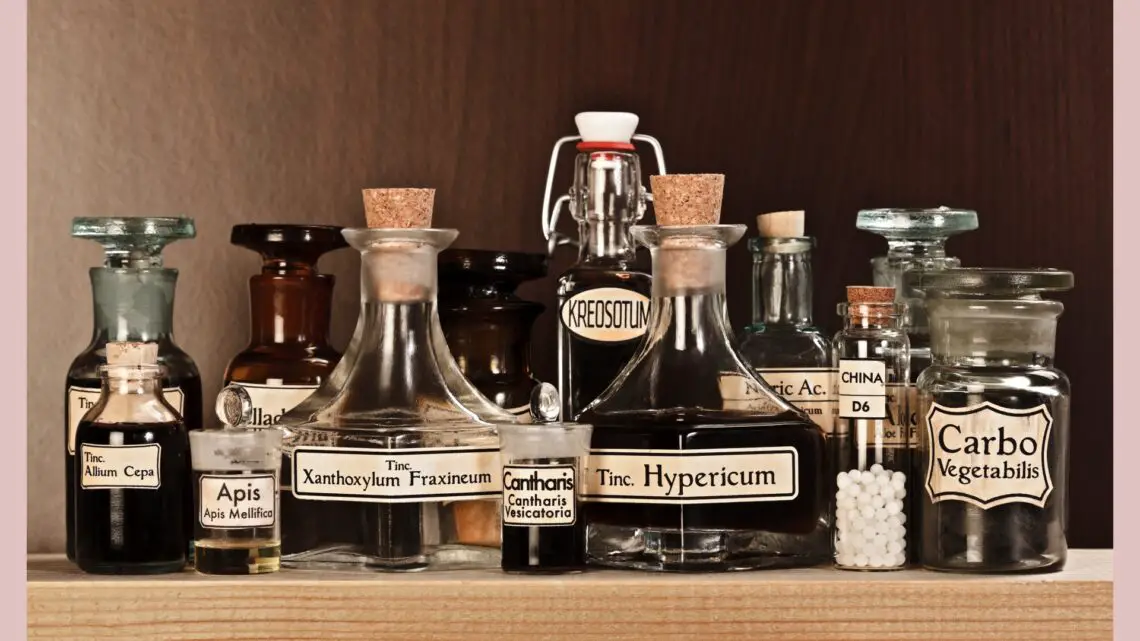Keywords: cardiac catheterization, homeopathy, radial artery occlusion
Background:
Cardiac catheterization is one of the most performed procedures, utilized both as a diagnostic and therapeutic technique in cardiovascular disease conditions, due to its wide range of indications. Coronary catheterization can be done by gaining access to the coronary artery either through the radial artery or femoral artery. 1
In 1989, trans-radial access (TRA) was introduced as an alternative to the trans-femoral access (TFA), as the latter carried a significant risk of access site bleeding complications.2 The life threatening complications of trans-femoral catheterization include retroperitoneal hemorrhages, pseudoaneurysms and hematoma.
Therefore, trans-radial approach has gained popularity over the years due to its technical advances and is widely accepted as a safe approach among the cardiac community. 3 Many trials have proven the superiority of TRA over TFA as it offers high patient comfort, lowers the risk of complications, reduces morbidity and is cost effective.2
However, the procedural complications of TRA include radial artery spasm and perforation and the post procedural complication includes radial artery occlusion and pseudo-aneurysm. Radial artery occlusion (RAO) is one of the most commonly associated complication of trans-radial catheterization with an incidence rate of 1-10%.1
It usually remains benign due to the collateral blood supply to the hand and spontaneous recanalization occurs in 50% of the cases. Immediate sheath removal, use of thin needle, checking the patency of the artery and short time compression post the procedure have proven to reduce the occurrence of RAO.
Administration of adequate doses of anticoagulant both during and after procedure is very important to prevent thrombosis formation. Administration of heparin generally recanalizes the artery within 1-3 months. Invasive recanalization is reported to have benefitted otherwise for the same.
There are few case studies demonstrating the effectiveness of classical homoeopathy in post-procedural and post-operative situations.4,5 Here, we present to you a case of radial artery occlusion caused due to procedural error treated with classical homeopathy. The individualized approach helped to recanalize the circulation without any invasive intervention.
Case report:
A 48-year-old woman sought homeopathic treatment for radial artery occlusion post transradial catheterization. The conventional approach of administering heparin failed to revascularize the artery.
She had undergone transradial catheterisation for diagnostic purpose as she had developed arrhythmia, difficult respiration ascending stairs, tachycardia and hypertension. The tests were normal.
Past history: There was no significant illness in the past
Family history: Mother suffered rheumatoid arthritis
Investigations: triplex doppler ultrasound study in March 2020 suggests:
TRIPLEX RIGHT RADIAL AND ULNAR ARTERIES (3/2020): shows complete occlusion from clot in the middle of the radial artery, with absence of flow peripheral to it. Obvious side network. Ulnar artery with physiological width, wall, and flow spectrum Doppler
Diagnosis: occlusion of right radial artery (03LB3ZZ – ICD-10)6
Analysis and prescription: Her first consultation took place on 11/06/2020. After a thorough case taking, the symptoms available for prescription were: (Repertorisation: Fig. 1 with Vithoulkas Compass software7.)
Table 1
| Symptoms: | Personal history: | Mental history: |
| 1. pain in right forearm with heaviness and numbness (+)
2. thrombosis (+++) 3. pain < lying on painful side (++), evening (+) 4. pulse-irregular (++) 5. weakness on ascending stairs (++) 6. headache before menses (+) |
1. thirstless
2. sleep-interrupted 3. aversion –eggs
|
1. very fastidious
2. reserved 3. she cannot express her anger
|


Fig 1. Repertorisation on Vithoulkas Compass
Arsenicum album 200 CH one dose was prescribed. The main pathology of the case above is the post procedural thrombosis. Numbness and pain of the affected hand are secondary and common to the pathology. The patient’s physical, mental and general complaints synchronized to give a clear picture of the chosen remedy. The strategy used in the above case is the totality of the symptoms.
Follow up:
Table 2
| Date: | Symptoms: | Investigations: | Prescription: |
| 28/07/2020 | · Right hand pain has reduced
· No heaviness · Numbness is gradually getting better. · No new complaints · Sleep is better |
TRIPLEX RIGHT RADIAL AND ULNAR ARTERIES (28/07/2020): in comparison with the previous examination from 03/2020. History of thrombosis of most of the radial artery, presenting significant improvement of its central part (2/3 approximately), showing normal flow and spectrum Doppler. Its peripheral part continues to show no flow. Ulnar artery with physiological width, wall and flow spectrum Doppler. | wait |
| 25/09/2020 | · pulse regular now
· weakness on ascending stairs completely better · pain and numbness of right hand better by 90% · sleep is better |
TRIPLEX RIGHT RADIAL AND ULNAR ARTERIES (25/09/2020): History of thrombosis of the radial artery after catheterization. The radial artery shows remnants of the old thrombosis in its peripheral part, showing normal flow and spectrum Doppler for the most part (significant improvement from the last examination). Ulnar artery with physiological width, wall and flow spectrum Doppler. | wait |
Discussion:
Radial artery occlusion is an important and manageable complication of trans-radial catheterization. The global incidence of such complications are reducing due to the careful precautions taken during procedures, however when the conventional therapy fails, alternate therapy could be explored for assistance.8
In this case, although the procedure was the cause of the patient’s illness, there were clear mental emotional pathologies associated indicating that the pathology isn’t local and there occurs an overall change in the being during any local change. This is being corroborated by many research fields such as the “sickness behavior research”.9
Only when applied as per the principles of homeopathy can we achieve such impressive changes. The assessment with Modified Naranjo Criteria for Homeopathy (MONARCH)10 yielded a score of 9 indicating strong casual relation to the outcome of the treatment.
Table 3.
| Table 3. Modified Naranjo Criteria for Assessing Causal Attribution of Clinical Outcome to Homeopathic Intervention | ||||
| Criteria | Y | N | Not sure/NA | case of RAO |
| 1. Was there an improvement in the main symptom or condition for which the homeopathic medicine was prescribed? | 2 | -1 | 0 | 2 |
| 2. Did the clinical improvement occur within a plausible time frame relative to the drug intake? | 1 | -2 | 0 | 1 |
| 3. Was there an initial aggravation of symptoms? | 1 | 0 | 0 | 0 |
| 4. Did the effect encompass more than the main symptom or condition, i.e., were other symptoms ultimately improved or changed? | 1 | 0 | 0 | 1 |
| 5. Did overall well being improve? | 1 | 0 | 0 | 1 |
| 6 (A) Direction of cure: did some symptoms improve in the opposite order of the development of symptoms of the disease? | 1 | 0 | 0 | 0 |
| 6 (B) Direction of cure: did at least two of the following aspects apply to the order of improvement of symptoms:- from organs of more importance to those of less importance, from deeper to more superficial aspects of the individual, from the top downwards | 1 | 0 | 0 | 1 |
| 7. Did “old symptoms” (defined as non-seasonal and non-cyclical symptoms that were previously thought to have resolved) reappear temporarily during the course of improvement? | 1 | 0 | 0 | 0 |
| 8. Are there alternate causes (other than the medicine) that with a high probability could have caused the improvement? (consider known course of disease, other forms of treatment, and other clinically relevant interventions) | -3 | 1 | 0 | 1 |
| 9. Was the health improvement confirmed by any objective /laboratory evidence? | 2 | 0 | 0 | 2 |
| 10. Did repeat dosing, if conducted, create similar clinical improvement? | 1 | 0 | 0 | 0 |
| Total | 9 | |||
Classical homoeopathy appears to be beneficial in circumstances when the disease has emerged as an unintended consequence of the procedures performed. There are previous case reports for good homeopathic outcomes following a procedure or surgical intervention.4, 5, 11, 12 Hence, homeopathy must be scientifically explored in such cases.
Conclusion:
In this case of post-procedure radial artery occlusion, classical homeopathy was beneficial. We need scientific investigation into the role of this therapy in post procedural complications.
Acknowledgements: The author thanks Dr. Aaditi Lakshman for help in preparing the manuscript
References:
- Avdikos G, Karatasakis A, Tsoumeleas A, Lazaris E, Ziakas A, Koutouzis M. Radial artery occlusion after transradial coronary catheterization. Cardiovasc Diagn Ther. 2017;7(3):305-316. doi:10.21037/cdt.2017.03.14
- Anjum I, Khan MA, Aadil M, Faraz A, Farooqui M, Hashmi A. Transradial vs. Transfemoral Approach in Cardiac Catheterization: A Literature Review. Cureus. 2017;9(6). doi:10.7759/cureus.1309
- Sinha SK, Jha MJ, Mishra V, et al. Radial artery occlusion – incidence, predictors and long-term outcome after TRAnsradial catheterization: Clinico-doppler ultrasound-based study (RAIL-TRAC study). Acta Cardiol. 2017;72(3):318-327. doi:10.1080/00015385.2017.1305158
- Vithoulkas G, Văcăraș V, Kavouras J, et al. Homeopathic treatment for prolonged postoperative coma: a case report. J Med Life. 2017;10(2):118-121. Accessed June 4, 2021. http://www.ncbi.nlm.nih.gov/pubmed/28616086
- Mahesh S, Denisova T, Gerasimova L, Pakhmutova N, Mallappa M, Vithoulkas G. Multimorbidity After Surgical Menopause Treated with Individualized Classical Homeopathy: A Case Report. Clin Med Insights Case Reports. 2020;13. doi:10.1177/1179547620965560
- 2021 ICD-10-PCS Procedure Code 03LB3ZZ: Occlusion of Right Radial Artery, Percutaneous Approach. Accessed June 4, 2021. https://www.icd10data.com/ICD10PCS/Codes/0/3/L/B/03LB3ZZ
- Vithoulkas Compass v6.0. Vithoulkas Compass; 2021.
- Jirous S, Bernat I, Slezak D, Miklik R, Rokyta R. Post-procedural radial artery occlusion and patency detection using duplex ultrasound vs. The reverse Barbeau test. Eur Hear Journal, Suppl. 2020;22(Suppl F):F23-F29. doi:10.1093/eurheartj/suaa095
- Eisenberger NI, Moieni M, Inagaki TK, Muscatell KA, Irwin MR. In Sickness and in Health: The Co-Regulation of Inflammation and Social Behavior. Neuropsychopharmacology. 2017;42(1):242-253.
- van Haselen RA. Homeopathic clinical case reports: Development of a supplement (HOM-CASE) to the CARE clinical case reporting guideline. Complementary Therapies in Medicine. 2016; 25:78-85.
- Tsintzas D, Vithoulkas G. Treatment of postoperative sore throat with the aid of the homeopathic remedy Arnica montana: a report of two cases. Journal of evidence-based complementary & alternative medicine. 2017;22(4):926-928.
- Sharma SS, Mahesh S, Vithoulkas G. Management of post-intubation subglottic stenosis with individualised homoeopathic therapy: A case report. Indian Journal of Research in Homoeopathy. 2020;14(3):211.






